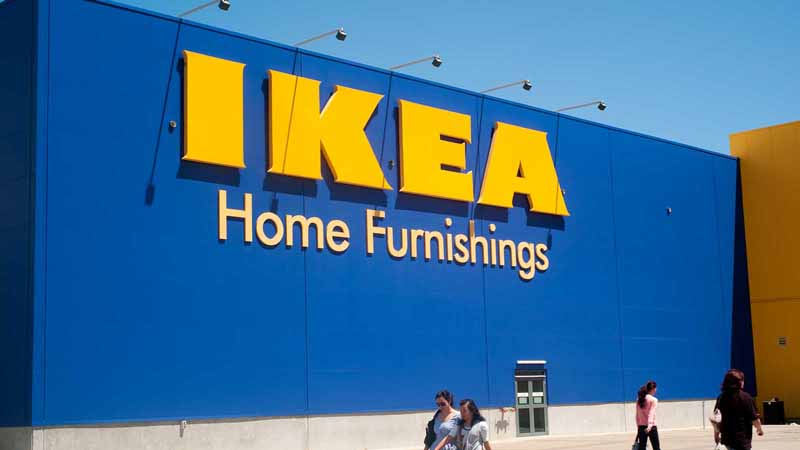How IKEA Survived — And Thrived — Through The Pandemic
By
Jemima McEvoy
|
Monday, 12 October 2020
|
Business,
Finance
While most businesses have suffered through months of consumer disruption due to the ongoing coronavirus pandemic, Swedish superstore IKEA saw positive growth and movement. The decades-old furniture supplier has been immensely popular in the United States since expanding its market across the pond. However, here’s how IKEA managed to keep customers interested —even increasing sales — amid unprecedented economic instability.

Headquartered in the Netherlands, IKEA sells ready-to-assembly furniture, home accessories, kitchen appliances, home services, and more. If you haven’t gotten lost in the expansive blue-and-yellow warehouses before, you’ve probably at least driven past one — they’re hard to miss. Customers have always loved IKEA because of the relatively low prices charged for high-quality goods. The furniture supplier has a big enough fanbase to offer a membership program (for free). Being a member of the IKEA family allows participants to benefit from discounts, rewards and, now and again, free treats from the in-store cafés.
Shutdowns and restrictions imposed during the pandemic, like with any business, posed a significant threat to IKEA. Anyone who has shopped there knows that being in the store forms a major part of the customer experience. Retail sales during 2020 — from the start of September 2019 to the end of August 2019 — dropped from about $48.9 billion (41.3 billion euros) the year prior to $46.9 billion (39.6 billion euros).
“That’s less than last year,” said interim IKEA Group CEO Jon Abrahamsson Ring. “But retail sales recovered quickly.”
Compared to other businesses, this is a very stable performance. Many industries have been devastated by Covid-19, but IKEA’s isn’t one of them. The saving grace, according to a company announcement about financial performance, has been online sales, which have skyrocketed during the pandemic. Per the announcement, IKEA’s online retail sales increased 45% this year, with the website drawing a whopping four billion visitors. IKEA also expanded e-commerce to three new markets, including China, in a bid to make the most of a flexible business model and limited overhead costs.
The pandemic was actually good for furniture businesses — or at least already established ones — because of the fact that most people were forced to spend more time at home than ever before. “This year families changed kitchens into schools, bedrooms into workplaces and backyard into amusement parks,” read a news release from IKEA.
CEO Ring said lower price items in particular have boomed: “These are uncertain times. We’re all more careful with our wallets and we’re spending more time in our homes … Low price is more important than ever and our lowest-price segment accounted for more than half of IKEA retail sales this summer.”
According to Ring, high online sales have continued even as stores are reopening.
“The IKEA website, stores and other locations complement each other to create a great customer service experience all the way around,” he said. “We’re pleased about online sales growth, but also very happy that customers will love our stores. People want to touch and try our products or get personal help.”
As mentioned, IKEA is not the only furniture store to have benefited from augmented interest during the coronavirus crisis. Fellow furniture supplier Wayfair reported an 84% increase in net revenue growth in Q2 of 2020 and 70% in Q3 in early August. Consequently, the less than 20-year-old platform is expected to surpass $19 billion in revenue by 2022, instead of 2023, as previously projected. “Wayfair’s Q2 2020 results were outstanding, as sales were driven online given many furniture stores were closed for extended periods of time,” wrote Seeking Alpha.
However, IKEA differentiates itself from competition by its simultaneous status as an established entity, and its constant push to modernize and grow. An example of this is IKEA’s sustainability pledges. The company has emphasized sustainability as a core value. In 2019, IKEA pledged 200 million euros to renewable energy and sustainable forestry, and has since outlined an effort to “integrate sustainability into every step of the business — from raw materials and production through to IKEA customers’ homes.”
For example, IKEA recently developed and released its new plant-based “meat” ball, an affordable alternative to its signature meatball which comprises just 4% of its climate footprint. “IKEA makes the biggest impact by offering products that are both affordable and sustainable,” said Ring.
These strategies have been successful for IKEA, resulting in major growth. This year, IKEA opened 33 new locations and expanded into a handful of important markets. In 2021, the company plans to further its growth in new markets, including Mexico and the Philippines, in addition to opening up more locations in its existing markets.
“This was a year of homecoming,” said Ring. “We’re proud to have made IKEA more affordable, accessible and sustainable for people around the world.”
About the Author
Jemima is a journalist who enjoys reporting on business, particularly small business and entrepreneurship.

